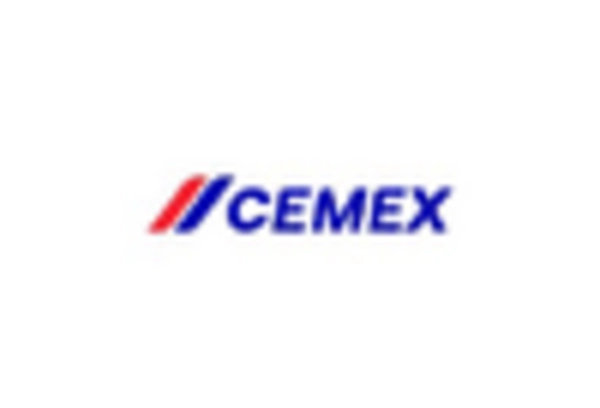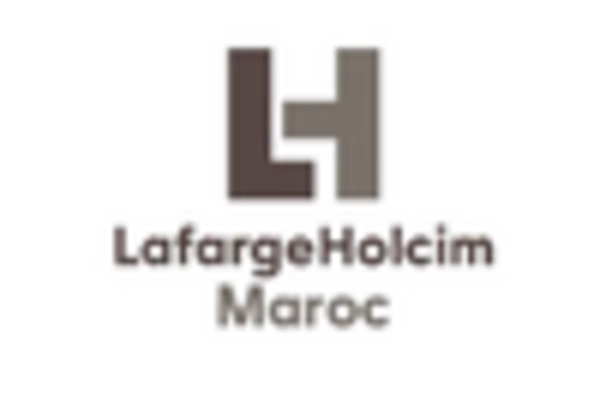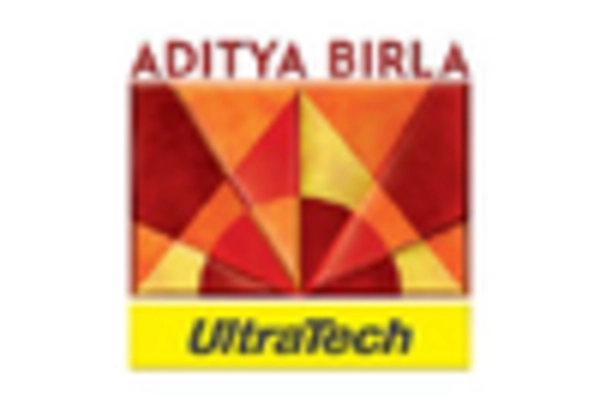Architectural Trends
Architectural trends significantly influence the White Cement Market, as designers and architects increasingly favor aesthetic appeal in their projects. White cement is often utilized for its ability to create visually striking structures, allowing for a broader palette of colors and finishes. The market for white cement is projected to grow at a compound annual growth rate of approximately 5.5 percent, driven by its application in high-end residential and commercial buildings. This trend is particularly evident in urban areas where modern architecture is prevalent. The versatility of white cement in achieving intricate designs and textures makes it a preferred choice among architects, thereby propelling its demand in the market.
Technological Innovations
Technological innovations play a significant role in shaping the White Cement Market. Advances in production techniques have led to improved quality and performance of white cement, making it more appealing to builders and contractors. Innovations such as the development of high-performance white cement with enhanced strength and durability are gaining traction. These advancements not only improve the product's functionality but also reduce production costs, thereby making white cement more competitive against traditional options. The integration of smart technologies in manufacturing processes is expected to further streamline production, potentially increasing market share for white cement in the construction sector.
Infrastructure Development
Infrastructure development remains a crucial driver for the White Cement Market, particularly in emerging economies. Governments are investing heavily in infrastructure projects, including roads, bridges, and public buildings, which require high-quality materials. The demand for white cement is expected to surge as these projects often prioritize durability and aesthetic appeal. For instance, the construction of iconic structures and public amenities using white cement not only enhances visual appeal but also ensures longevity. As urbanization continues to accelerate, the need for robust infrastructure will likely sustain the growth of the white cement market, with projections indicating a potential increase in demand by over 10 percent in the next five years.
Sustainability Initiatives
The increasing emphasis on sustainability initiatives is a pivotal driver for the White Cement Market. As environmental concerns gain traction, construction companies are increasingly opting for eco-friendly materials. White cement, known for its lower carbon footprint compared to traditional grey cement, aligns with these sustainability goals. In fact, the production of white cement can result in up to 30 percent less CO2 emissions. This shift towards sustainable construction practices is not merely a trend but appears to be a long-term commitment, as regulatory frameworks worldwide tighten around emissions. Consequently, the demand for white cement is likely to rise, as it is perceived as a more responsible choice in the construction sector.
Rising Construction Activities
Rising construction activities are a fundamental driver for the White Cement Market, as the demand for new residential and commercial buildings continues to escalate. With urban populations growing, the need for housing and infrastructure is becoming increasingly urgent. The white cement market is projected to benefit from this trend, as builders seek materials that offer both aesthetic and functional advantages. In many regions, the construction sector is experiencing a renaissance, with investments in new projects expected to rise by approximately 8 percent annually. This surge in construction activities is likely to bolster the demand for white cement, as it is often chosen for its superior finish and performance in high-end applications.

















Leave a Comment